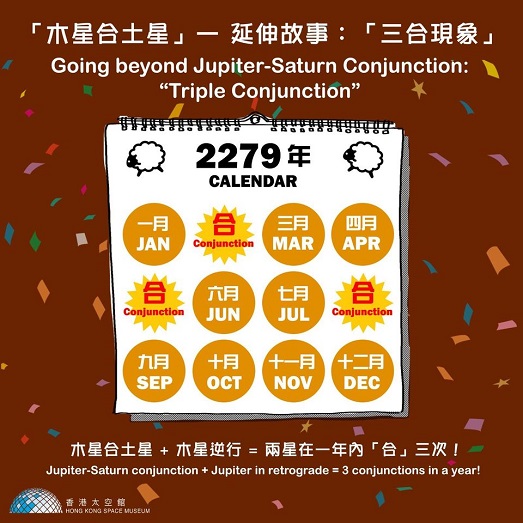The rare Jupiter-Saturn Conjunction last month was spectacular. How about THREE conjunctions in a year? Well, it is possible if Jupiter is in retrograde at the right moment!
What is a "retrograde motion"? The relative positions between the planets in the Solar System are constantly changing as they are travelling in distinct orbits around the Sun at different speeds. For most of the time we would see planets move from West to East against the stellar background on a daily basis ("prograde motion").

However, they sometimes move in the opposite direction, from East to West ("retrograde motion", see Figure 1). (Let's try an experiment: identify some stuffs around you as foreground and background objects. Turn your phone's camera on and move it horizontally to observe the apparent changes of the objects' positions.)

As illustrated in Figure 2, if Jupiter retrogrades right after a Jupiter-Saturn conjunction (happens about every 20 years), both planets will have two additional chances to "meet" (share the same ecliptic longitude or equatorial longitude, depending on the definition) within a year. We named these successive conjunctions as "triple conjunction" between Jupiter and Saturn. Moreover, triple conjunction can occur between other combinations of planet-planet (for example, Mars-Jupiter) or planet-star (for example, Mars-Spica).

There is no Jupiter-Saturn triple conjunction between the 21st and 22nd centuries. The nearest occurrences are December 1980 to July 1981 and September 2238 to March 2239. How scarce this phenomenon is!



